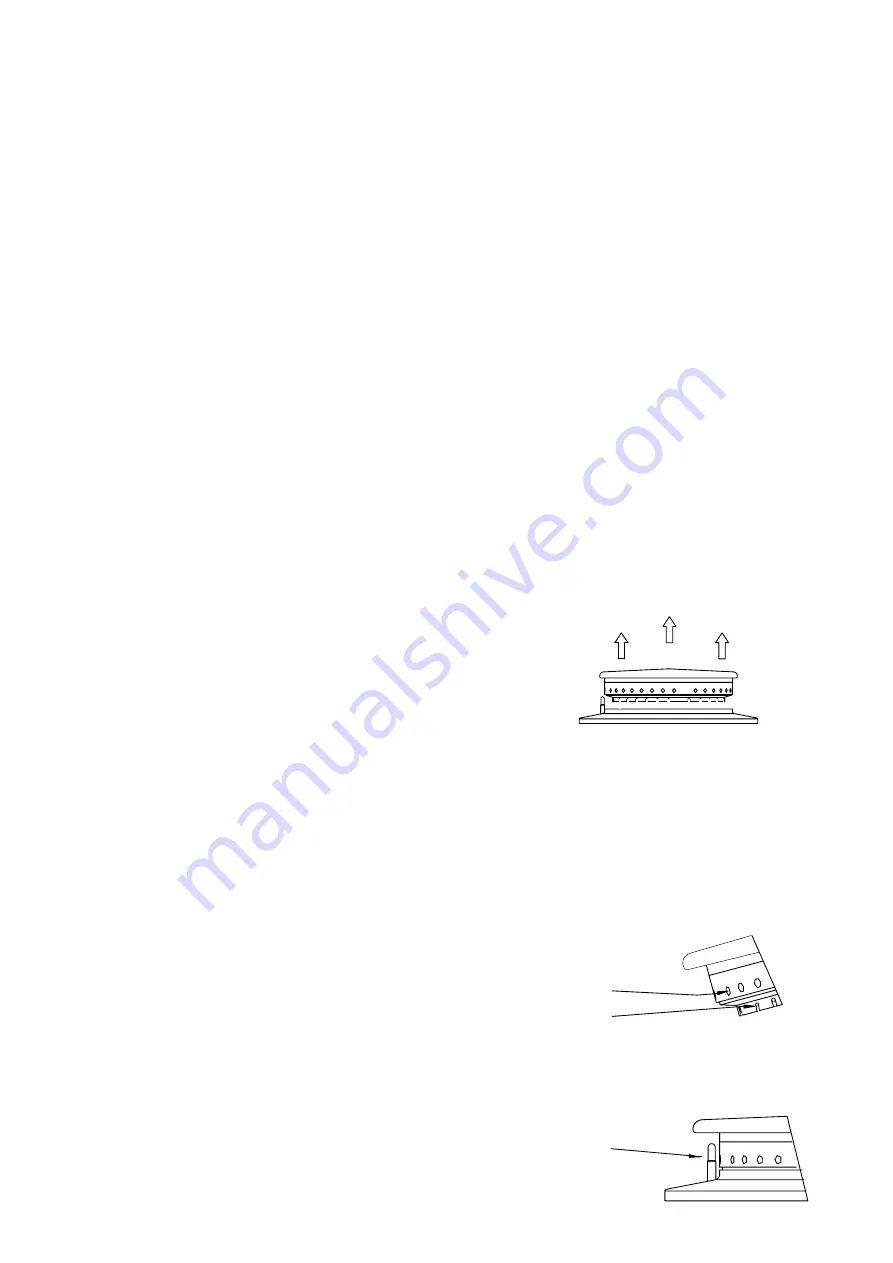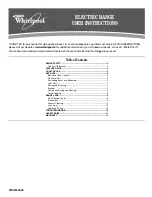
Ports
Slots
Flame Sensor
SECTION 4 - CLEANING and MAINTENANCE
All surfaces are easier to clean if spillage is removed
before it becomes burnt on and if unit is cleaned daily.
Stainless Steel Surfaces
These surfaces should be cleaned with hot water and
detergent then dried and polished with a soft cloth.
Cleaning agents containing bleach, abrasives or
caustic chemicals will damage or stain the stainless
steel surfaces and must not be used.
Vitreous Enamel Surfaces
Approved cleaning agents which have the mark of the
Vitreous Enamel Development Centre are
recommended.
It is advisable to clean daily after use. Wipe clean the
vitreous enamel surfaces while they are still warm
using a soft cloth and hot soapy water. Badly stained,
removable parts should be soaked in hot water with
an approved detergent. If the parts are not removable
fromthe unit the application of warmwater with
approved detergent using nylon or scotch cleaning
pads will give good results.
Solid Top
The hob fillings can be lifted off the range for cleaning
with warmsoapy water, only using abrasives such as
nylon cleaning pads for extreme overspill. Remove
all accumulated debris which may be gathered in the
burner tray and the ledge which supports the fillings.
Dry all parts thoroughly.
Warning
Since the fillings are very heavy, care should be taken
when handling them.
Open Top and Wok Burners
Burner cleaning should be carried out daily. Burner
efficiency will be reduced significantly if
recommended cleaning is not carried out.
Remove pan supports and open top burner heads.
Wash all parts with hot soapy water according to
detailed instructions enclosed at end of section.
After washing, dry all parts well and ensure all water
is removed from inside burner head.
Wipe out hob area and drip tray(s). On models with
stainless steel, semi-sealed open top hobs, the hob
may be lifted off for cleaning purposes. The hob tray
is held in position by ballstud fixings at each corner.
To lift away, pull tray up by gripping through the
burner cut-outs.
Replace all parts in reverse order. Ensure that all
parts are located correctly. The semi-sealed hob
must be pushed down fully on the ballstud fixings.
Remove spillage from wok burner taking care not to
block or damage the brass jets. These should only
ever be cleared using a wooden splinter or soft fuse
wire to prevent damage to the orifice.
Dry off the pan supports by hand. NEVER LEAVE
THESE TO DRY NATURALLY. After drying, apply a
light filmof vegetable oil to prevent oxidisation.
Note
Vitreous enamelled pan supports are available as an
optional extra.
OVEN
To Clean The Oven
Clean while oven is warmbut not hot. The enamelled
base plate lifts out. The runners can be removed,
(grip at the bottom, lift upwards until the lower ends
come out of the brackets, pull outward towards centre
of oven, then lower).
Two oven drip tray(s) are provided and these are
simply removed without disturbing burner, by sliding
themout fromthe front.
CLEANING INSTRUCTIONS for
OPEN TOP BURNERS
The following instructions should be followed when :
a) A spillage has occurred on the burner.
b) The burner fails to light or stay alight.
c) At the end of each day or cooking period.
Caution
Parts may be hot therefore protection to avoid burns
should be used.
1. Remove pan support.
2. Remove burner head and bezel by lifting upward.
Figure 3
3. Thoroughly clean with soap and water. Ensure all
burner ports are clean and free fromfood or
cleaning material debris.
Important
Stubborn debris lodged in ports (See Figure 4) can be
removed using a non-metallic implement such as a
cocktail stick. The slots in the base should be freed of
debris using a soft brush.
Dry burner with a lint-free cloth and blow through the
ports to ensure there is no blockage.
Figure 4
4. Clean any spillage fromburner base, ensuring all
food and cleaning material debris is removed.
Dry burner base thoroughly, taking care not to
damage the flame sensor.
Figure 5
























